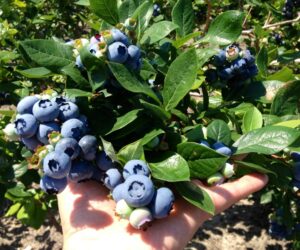Los Angeles has a distinct personality shaped by its mix of cultures and forward-thinking mindset. In this lively city, architecture leans on smart design strategies that balance creativity and practicality. Architects here help shape buildings that aren’t just visually appealing but also meet the needs of the people using them, with attention to both the environment and the surrounding community.

How a space is designed directly affects how people experience it. A successful environment comes from thoughtful planning and awareness of how individuals move through and interact with a place. When teams collaborate and think strategically, the result can be more than just buildings—it can be spaces that improve everyday life.
Why a Creative Architectural Strategy Sets the Foundation for Performance
Good architecture is more than technical plans—it depends on fresh, thoughtful ideas. “Great design starts with understanding the land and the people who use it,” says an architect in Los Angeles. “When you combine local insight with creative thinking, you get spaces that feel both functional and alive.” Customizing each project to its site—like placing buildings to catch natural light on hillsides—can improve how a space functions and feels.
Bringing in elements of local culture makes spaces feel more connected and welcoming. Early decisions, like leaving room for future mechanical system upgrades, can save time and money later while keeping the building running efficiently. Starting with a clear analysis of the site gives the whole design process a stronger base.
Design-Led Planning That Drives Traffic, Flow, and Function
How people move through a space shapes how they feel in it. The best layouts guide that movement naturally—no confusion, no bottlenecks. Wide, obvious walkways near entry points help people find their way without hesitation. When architects define each area’s purpose early on, it becomes easier for people to interact with the space without friction.
A well-planned layout eases foot traffic, helps people find their way, and creates comfort through smooth transitions between open and private areas. In busy spaces like retail, clear zones reduce friction and support flow. When movement is considered early on, people tend to feel more at ease and connected to the space.
Design That Resonates and Builds Connection
A space that leaves a lasting impression does more than just function—it connects with people on an emotional level. In Los Angeles, visual design choices help shape how people respond to a space. Bold color palettes inspired by local art, murals that reflect shared history, and open plazas that invite community gatherings all contribute to making a space feel like a meaningful part of the neighborhood.
Using materials tied to local traditions, like sandblasted concrete, helps ground a building in its surroundings. Tailoring interiors to fit what people expect or enjoy builds loyalty and keeps them coming back. Sticking closely to the original design vision during construction builds trust and helps deliver a better experience for everyone who walks through the doors.
Cross-Disciplinary Collaboration That Enhances the Output
Great architecture tends to happen when architects, engineers, builders, and designers work from the same playbook. Shared goals at the start make decisions faster and communication cleaner. When teams align early, they’re better equipped to catch changes before they snowball into rework or delays. That kind of coordination gives creative ideas room to move forward without getting stuck in bottlenecks.
When everyone involved feels aligned, it’s easier to avoid issues during the build and stick to the original idea. Combining strengths from different fields adds to the project’s quality and flexibility. Regular team sessions and idea exchanges can help keep the design fresh and functional all the way through.
Measurable Results That Prove the Strategy Worked
The success of a smart design approach often shows up in clear results. Performance data can show how choices like using more daylight lead to lower energy bills and better comfort. Unique designs that stand out also tend to raise property value, making the project more profitable.
User feedback is just as important. When people keep coming back and leave positive comments, it shows that the space works. Quick surveys and ongoing check-ins help designers make improvements over time and keep people satisfied with the space.
Good architecture doesn’t need to shout—it feels right the moment you step inside. In Los Angeles, the most memorable spaces come from understanding the people who use them and designing with care from the start. When teams stay connected, small details—like clear walkways, local materials, or a layout that just makes sense—add up to something lasting. Following through on the original vision builds trust, while listening to how people respond after opening day helps shape better work down the line. The goal isn’t perfection—it’s usefulness, comfort, and connection. When design puts people first, the space speaks for itself.


